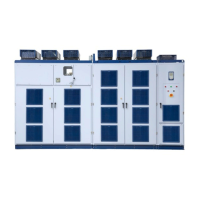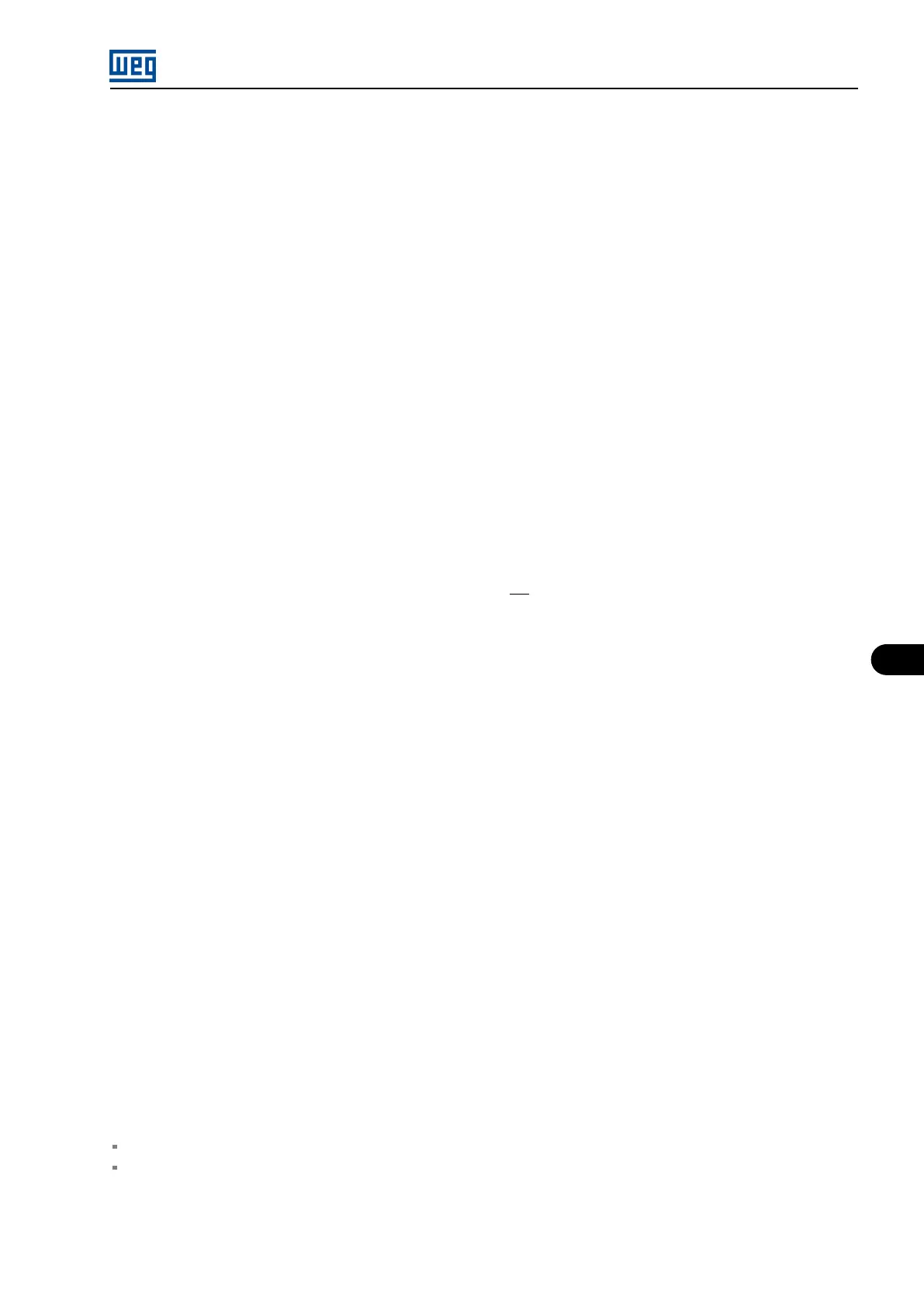6
SPECIAL FUNCTIONS
6 SPECIAL FUNCTIONS
6.1 PID REGULATOR
The MVW3000 has the PID regulator function, which can be used to control a closed loop process. That function
consists of a controller with proportional, integral and derivative gain, superposed to the normal MVW3000 speed
control.
In order to keep the process variable (the one to be controlled - water level in a reservoir, for instance) at the value
adjusted with the setpoint, the speed will be varied automatically by the PID regulator.
That regulator is able, for instance, to control the flow in a pipeline by means of flow feedback applied to the analog
input AI2 or AI3 (selected through P0524), and setpoint according to the P0221 or P0222 definition (e.g., AI1), with
the inverter driving the pump that is responsible for the pipeline flow.
Other application examples are: Level or temperature control, dosage, etc.
The PID regulator function is activated by setting P0203 = 1 or 3. Figure 6.1 on page 6-3 presents a Academic
PID Regulator block diagram. The Academic PID Regulator transference function in the frequency domain is:
y(s) = Kp e(s)(1 +
1
sTi
+ sTd)
Replacing the integrator by a sum and the derivative by the incremental quotient, we will obtain an approximate
value for the discrete (recursive) transfer equation shown next:
y(kTa) = y(k-1)Ta + Kp[(e(kTa) - e(k-1)Ta) + Ki e(k-1)Ta + Kd(e(kTa) - 2e(k-1)Ta + e(k-2)Ta)]
Where:
Kp (Proportional Gain): Kp = P0520 x 4096.
Ki (Integral Gain): Ki = P0521 x 4096 = [Ta/Ti x 4096 ].
Kd (Differential Gain): Kd = P0522 x 4096 = [Td/Ta x 4096].
Ta = 0.02 s (PID regulator sampling period).
SP*: reference, maximum 13 bits (0 a 8191).
X: process variable (or controlled), read through AI2 or AI3, maximum 13 bits.
e(kTa): current output.
y(kTa): current PID output, maximum 13 bits.
y(k-1)Ta: previous PID output.
e(kTa): current error [SP*(k) - X(k)].
e(k-1)Ta: previous error [SP*(k-1) - X(k-1)].
e(k-2)Ta: error at two previous samplings [SP*(k-2) - X(k-2)].
The feedback signal must be connected to the analog input AI2’ and AI3’ (see Figure 6.1 on page 6-3).
Setpoint can be defined via:
Keypad: parameter P0525.
Analog inputs AI1’, AI2’, AI3’, AI4’, AI5’, (AI1’ + AI2’) > 0, (AI1’ + AI2’), Multispeed, Serial, Fieldbus.
Note: When P0203 = 1 or 3, do not use the reference via P.E. at P0221/P0222 = 7.
When the PID function is enabled (P0203 = 1 or 3):
MVW3000 | 6-1

